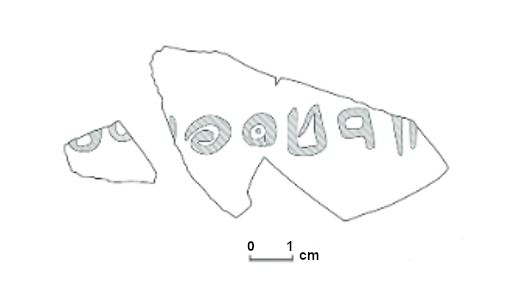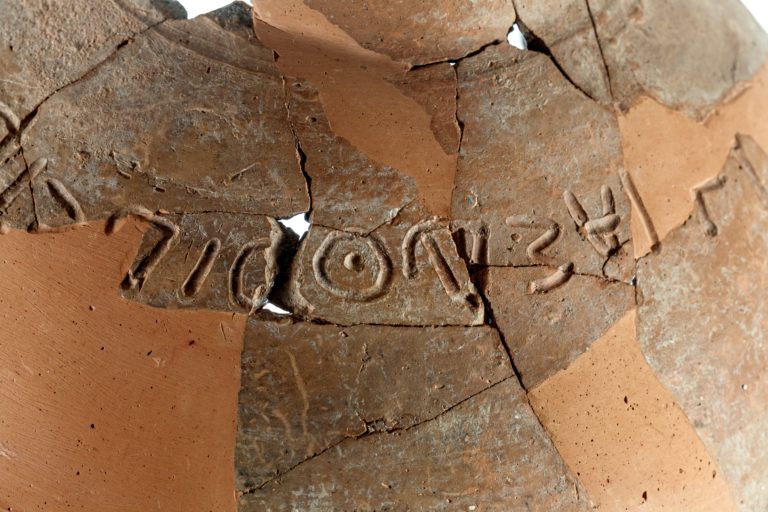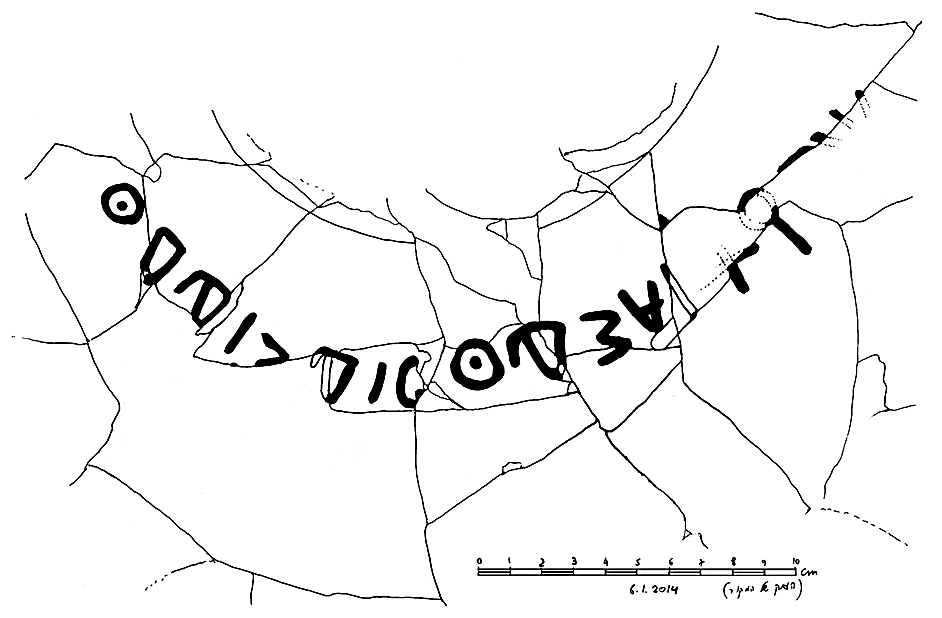The top discovery in biblical archaeology in 2021 on ABR staff member Bryan Windle’s top-10 list (https://www.youtube.com/watch?v=PdDUv407hSM) was an inscription with the name “Jerub-Baal” (biblearchaeologyreport.com). It was number two on Christianity Today’s list. Why so important? First of all, it is the first inscription to be found from the time of the Judges. By contrast, six inscriptions from the United Kingdom period have been found since 2008. More importantly, however, is the fact that “Jerub-Baal” is a biblical name. In Judges 6 we read how God called Gideon to deliver Israel from the Midianites. Gideon’s first assignment was to destroy his father Joash’s idolatrous altar to Baal, the Canaanite storm god. Under the cover of darkness, Gideon, with help from ten of his servants, tore down the altar. Evidently this was an altar used by the townspeople as well, because they were extremely upset when they saw the demolished altar the next day. “Bring out your son. He must die…,” they demanded of Joash. His answer was quite surprising (“Joash” means “Yahweh has given,” or “fire of Yahweh”): “If Baal really is a god, he can defend himself when someone breaks down his altar.” “So because Gideon broke down Baal’s altar, they gave him the name Jerub-Baal that day, saying, ‘Let Baal contend with him’” (Jgs 6:30–32; NIV).
The inscription was discovered on the last day of the 2019 season at a small site named Khirbet al-Ra‘i, 25 miles southwest of Jerusalem, and was published in 2021. Two joining sherds, together about two and a half inches wide, were found in a refuse pit. A third fragment with traces of writing from the same inscription was found in the pit the following season, but it did not join with the first two sherds. The stratum above the pit was well dated to ca. 1050–1000 BC based on pottery and radiometric dating. Stratigraphy and the pottery found in the pit suggest a date of ca. 1150–1050 BC for the pit. Since the inscription was written on broken pieces of pottery found in a refuse pit, it could be earlier than the pit. I would date Gideon to ca. 1181–1142 BC. The writing, from right to left, is early pictographic Hebrew, a script based on Egyptian hieroglyphs, that originated in Egypt at the time of the Israelite Sojourn (1876–1446 BC) and lasted until the tenth century BC.
|
|
 |
The Jerub-Baal inscription (photo, left, by Dafna Gazit, Israel Antiquities Authority; and drawing, right, by Olga Dobovsky)
The sherds came from a jug. Is it possible that the name on the jug is that of the Jerub-Baal of the Bible? As with most discoveries in archaeology, we cannot give a definite answer. Unfortunately, the patronymic (father’s name), if indeed there was one, did not survive. If the inscription read “Jerub-Baal, son of Joash,” then we could be more certain about the identification. The circumstances surrounding the giving of the name to Gideon were certainly unusual, and it seems improbable that any other individual would have had that name. It is doubtful that Gideon himself wrote the inscription, since it was skillfully executed, clearly done by a professional scribe. During his 40 years as judge of Israel (Jgs 8:28), however, it is entirely possible that Gideon had a scribe in his service. If this was indeed Gideon’s jug, how did it turn up in Khirbet al-Ra‘i, some 50 miles from Gideon’s hometown of Ophrah in Manasseh? We can imagine that Gideon, as judge of Israel, traveled widely throughout the land to perform his civil and administrative duties.
A related find is that of an incised inscription on the shoulder of a storage jar, again done by a professional scribe, found at Khirbet Qeiyafa, 19 miles west-southwest of Jerusalem. It was discovered in 2012 and published in 2015. The name inscribed includes the patronymic: “Ish-Baal, son of Beda.” Khirbet Qeiyafa was a single-period site whose destruction has been accurately dated by radiometric dating to 1020–980 BC (i.e., the end of the reign of Saul or the beginning of David’s reign). There is an individual in the Bible who had the name “Ish-Baal,” but he was the son of Saul, not Beda. The name “Beda” is rare since it does not appear in the Bible and since this is the first time it has been found in an ancient inscription.
 |
 |
The Ish-Baal inscription written in early pictographic Hebrew from right to left (photo, left, by Tal Rogozin; and drawing, right, by Ada Yardeni)
The Ish-Baal of the Bible was a rival of David. He ruled the Northern Kingdom for two years (2 Sm 2:10) before being assassinated by two of his commanders (2 Sm 4:1–6), an event that gave David sole rule over all of Israel (2 Sm 5:1–5). His name is given as “Esh-Baal” in 1 Chronicles 8:33 and 9:39. “Baal” in Hebrew can mean “lord.” In the case of “Ish-Baal,” though, it is clear that the Canaanite god was meant since the author of the book of 2 Samuel censored the name and changed “Baal” to “bosheth,” meaning “shame.” So, rather than meaning “man of Baal,” the name became “man of shame.” There are a number of other Bible names containing the element “Baal,” all from the time of David or earlier. After that, “Baal” does not occur in Bible names. Although it has been found in ancient inscriptions from the Northern Kingdom from the ninth through sixth centuries BC, it has not been found in Judah during that time, where some 495 personal names have been recovered. The authors of the report on the Jerub-Baal inscription concluded, “The chronological correlation between the biblical tradition and ancient Judean inscriptions indicates that the biblical text preserves authentic Judean onomastic traditions” (Jerusalem Journal of Archaeology 2 [2021]: 12).
Reference
Rollston, Christopher; Garfinkel, Yosef; Keimer, Kyle H.; Davis, Gillan; and Ganor, Saar. 2021. The Jerubba‘al Inscription from Khirbet al-Ra‘i: A Proto-Canaanite (Early Alphabetic) Inscription. Jerusalem Journal of Archaeology 2: 1–15. https://jjar.huji.ac.il/publications.












